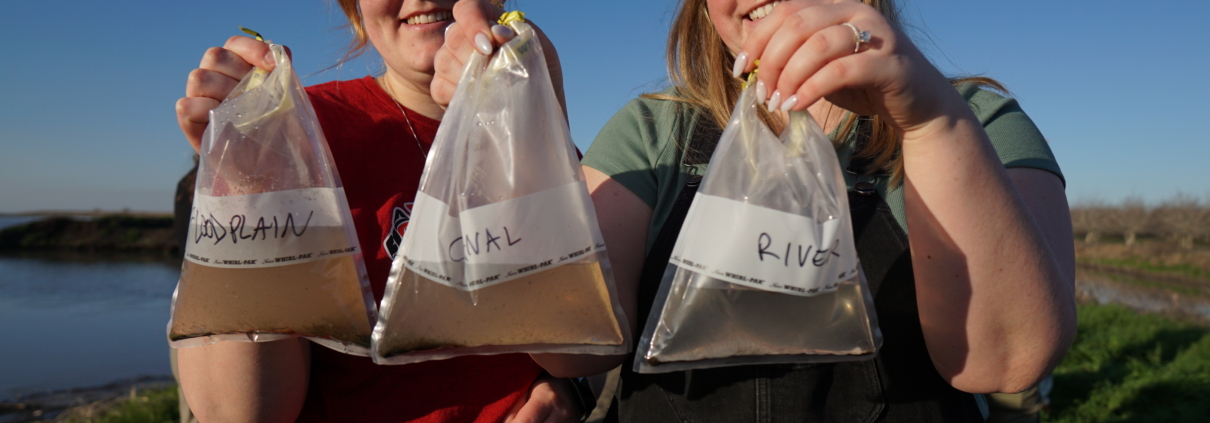Reviving floodplains for salmon in the Fraser River
Floodplains provide critical, food-rich habitat for juvenile salmon. These low-lying areas adjacent to stream channels allow young salmon to grow healthy and strong before their journey to the ocean.
Floodplains form seasonally when water levels are high and rivers naturally flood, creating a temporary reservoir of water that slows water flows, reduces flooding intensity, and filters out pollutants and sediments. This creates high-value habitat for fish and other biodiversity.
For young salmon, floodplains offer virtually everything they need: complex habitat, refuge from predators, improved water quality, calm water flows, and abundant food. Because floodplains support a dense and diverse array of invertebrate prey, juvenile salmon grow significantly bigger there than in the main river.
However, development during the last century has disconnected floodplains from rivers with dikes and other flood-control infrastructure.
In the Lower Fraser River, salmon have lost access to up to 85 per cent of their historical floodplain habitat due to urbanization and development.
“The Fraser River used to flood all throughout the valley in Chilliwack, Abbotsford, and Langley. In the development of the last 100 years or so, we’ve built infrastructure to try and contain the river. We’ve isolated the natural floodplain from the river,” says Jason Hwang, Chief Programs Officer, Pacific Salmon Foundation.
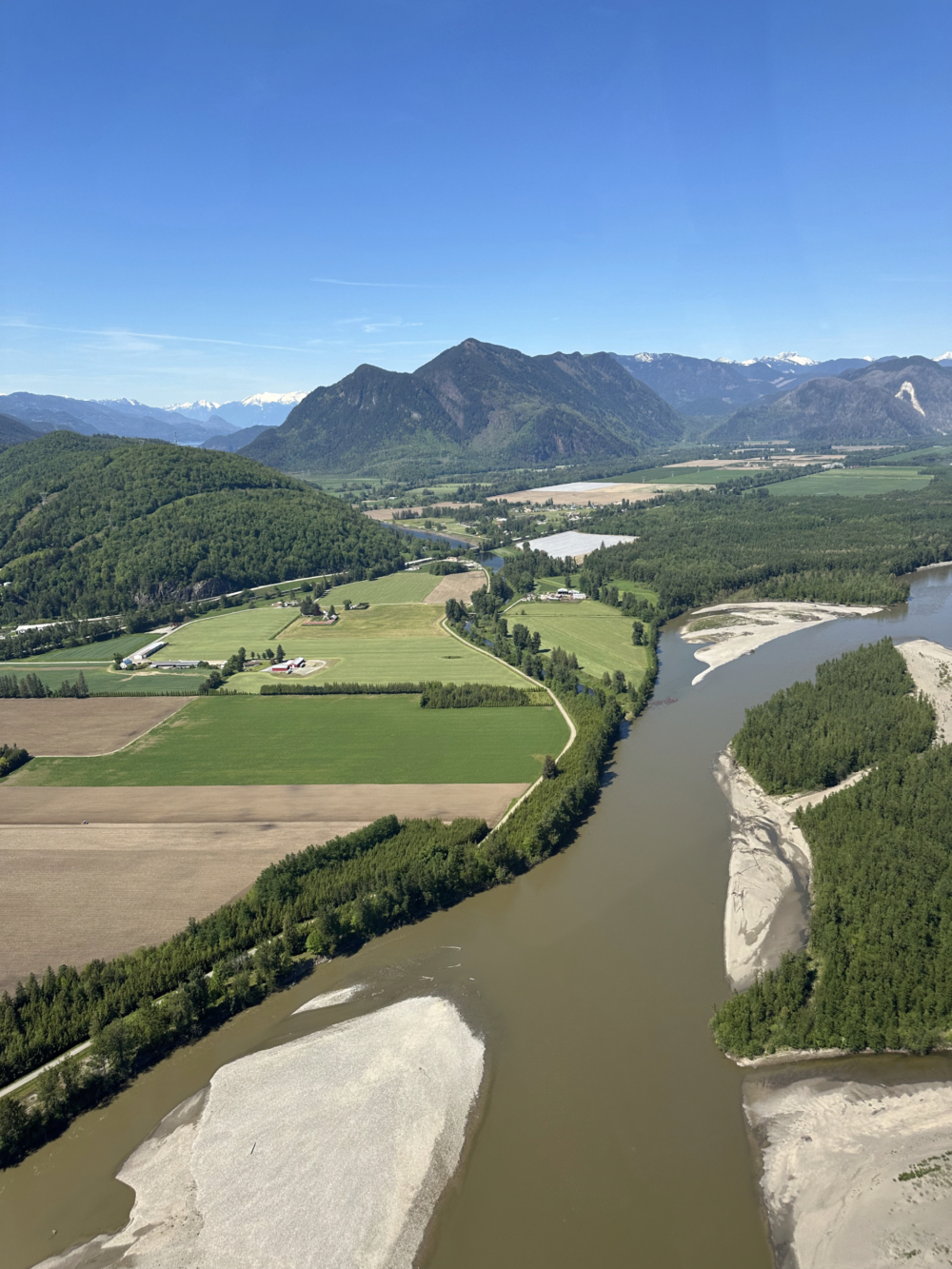
An aerial view of the Fraser Valley.
Inspired by research in California, the Pacific Salmon Foundation (PSF) is developing a pilot plan to re-activate lost floodplain wetlands in the Lower Fraser and bring back natural flooding that is integral to supporting healthy juvenile salmon.
“In the Fraser Valley, agriculture now occurs on what used to be the floodplain. We’re exploring how we could create a win-win scenario for salmon and agriculture,” says Hwang.
“That’s the magic they’ve discovered in California. Their project is working very well for farmers in the Sacramento Valley, but it’s also providing really significant benefits for Chinook salmon.”
Win-wins for salmon and agriculture
Currently in its early scoping phase, PSF’s Salmon and Agriculture project aims to collaborate with local farmers to recreate natural floodplain conditions by seasonally flooding inactive agricultural fields in a way that aligns with farming objectives. This approach would provide juvenile salmon with access to high-quality wetland habitat without interrupting agricultural activity.
The idea draws inspiration from the Sacramento Valley, where researchers have been reviving floodplain habitat in the Upper Yolo Bypass. Led by California Trout and the University of California, Davis – Center for Watershed Sciences, and in collaboration with dozens of other partners, this innovative project transforms about 25,000 acres of farmland into managed wetlands each year.
For more than a decade, California researchers and rice farmers have developed creative ways to manage floodwaters while benefiting salmon.
“What happens if you put salmon in a flooded rice field? We found out they didn’t just survive. They thrived,” explains Jacob Katz, senior scientist with California Trout.
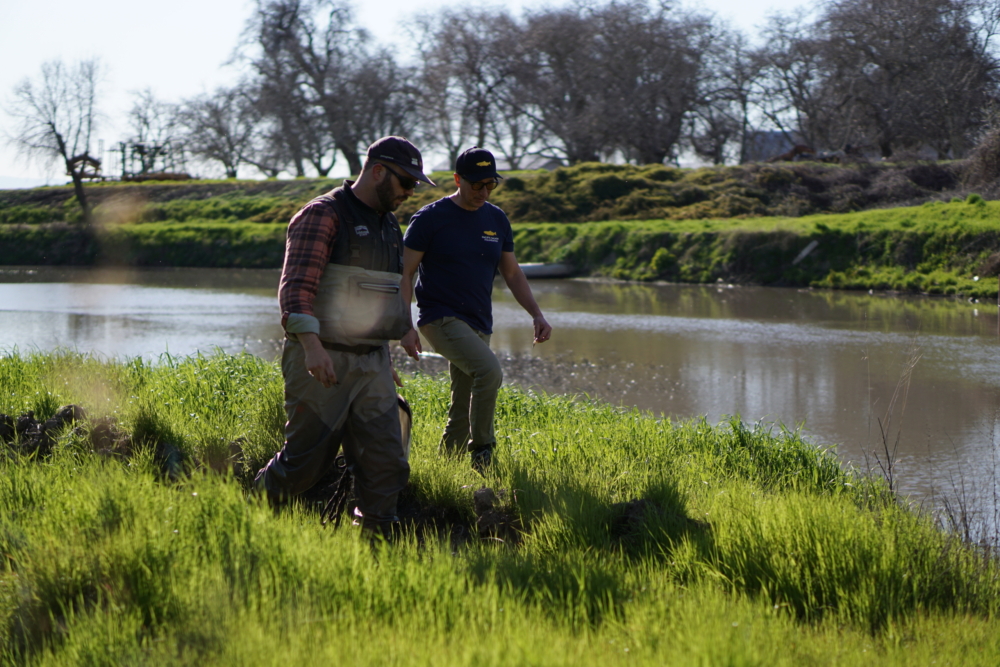
Fish food
California researchers have observed multiple benefits from these efforts, including improved habitat for fish and other wildlife, enhanced groundwater recharge, and massive increases in zooplankton and invertebrates, called ‘fish food’ by Katz and his team.
“There is an amazing amount of life generated in these shallowly flooded wetlands. After several weeks, the water just seethes with insect productivity. We call it Zoop soup – zooplankton soup. When you look at these bugs as fish food, you see why we get much healthier salmon,” says Katz.
His team’s research has shown that salmon raised in these flooded habitats with access to abundant fish food grow faster and larger than those stuck in the leveed river channels that typify river habitat in the farmed valleys. For example, samples collected near Sacramento indicate that invertebrate density on the floodplain is up to 149 times higher than in the river (that is 15,000 per cent more food), highlighting the high productivity of reactivated floodplain ecosystems.
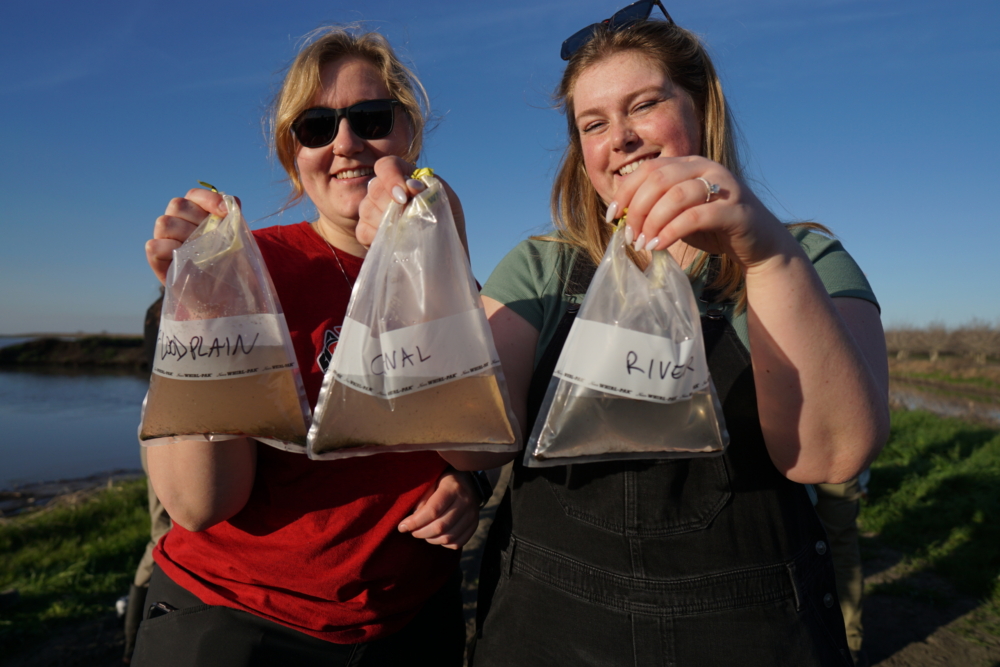
Bags of ‘Zoop’ (zooplankton soup) from the river, canal, and floodplain.
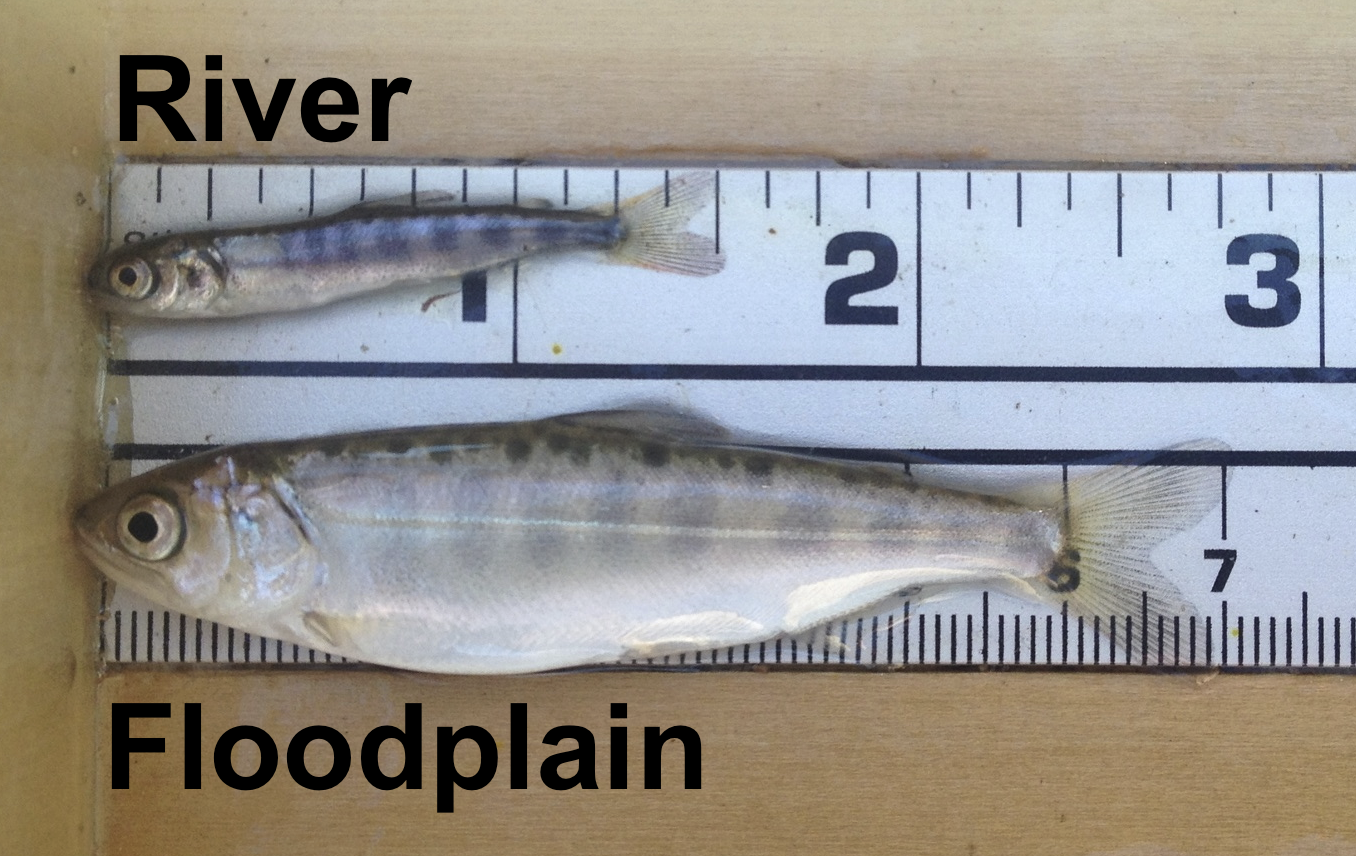
Well-fed juvenile salmon in the floodplain are aptly nicknamed ‘floodplain fatties.’ Photo: California Trout
While British Columbia’s Fraser Valley and California’s Sacramento Valley differ in crop types and landscapes, both regions have lost historical floodplains and face declining salmon populations.
PSF is learning from California’s success as it looks to develop a pilot plan for floodplain reactivation in British Columbia and begin habitat and invertebrate sampling in the Lower Fraser Valley.
“Our partners from California have shown us that it’s possible to bring benefits for salmon and the practice of agriculture together. We are working to bring that idea of ‘multiple use’ benefits back home to British Columbia in the Lower Fraser,” says Hwang.
PSF has been engaging with collaborators on this project, including First Nations organizations, non-profits, the agricultural sector, and government agencies.
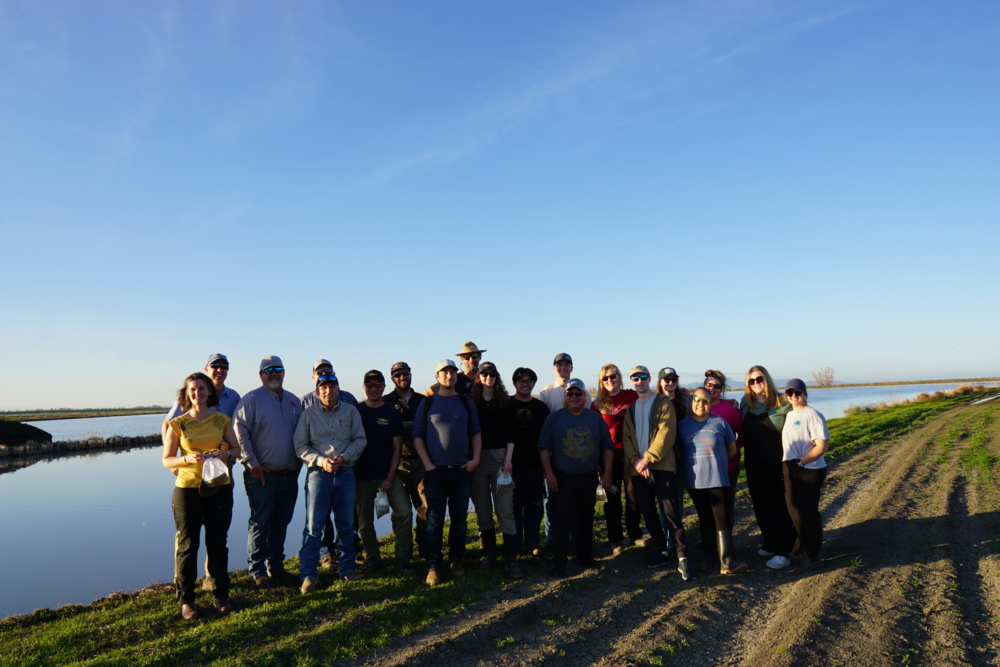
The British Columbia Salmon Restoration and Innovation Fund, a joint program from the Government of Canada and Province of B.C., supports PSF’s Salmon-Agriculture project.
